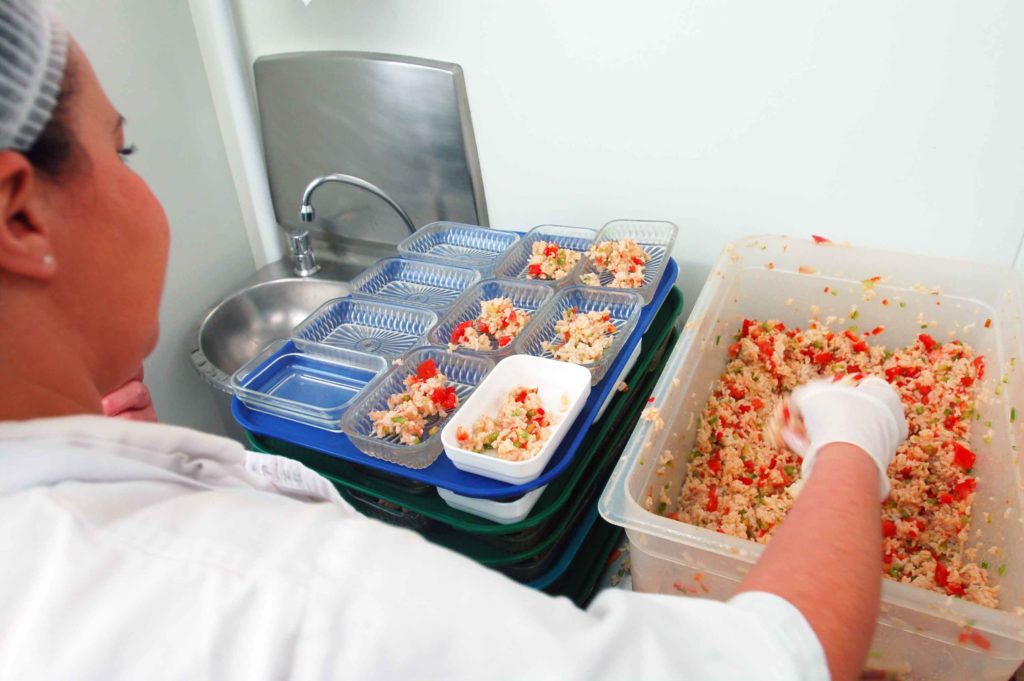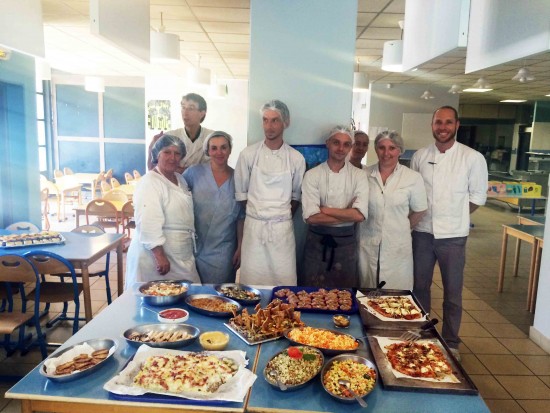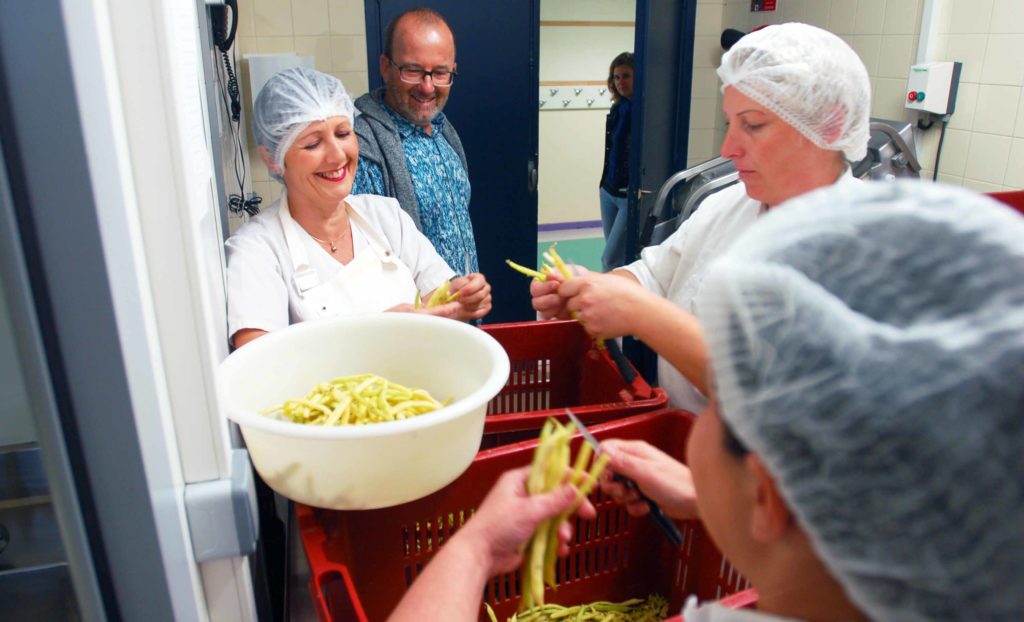One kitchen per school
Mouans-Sartoux did not want to have a central kitchen to cook and deliver one thousand meals. Each of the three school groups has its own production unit and a legumery (lire ci-dessous), avec son personnel composé de six à neuf personnes selon les lieux. Cette solution permet da great flexibility and a better level of team involvement and responsiveness. The opportunity for cooks to manage their own time increases the professional ease. It also improves service efficiency. Do not forget that everything is homemade, from starter to dessert to pasta pizzas, lasagna, cakes, with fresh and raw products. This program also allows animation teams to work in in close connection with the kitchens to present quality plates and develop guests well-being.
Market cooking, what are we talking about?
The three school restaurants and administrative staff have integrated the concept of market cooking. This means adaptation of the teams to seasonal products offer, qu’il s’agisse de la production de la régie agricole ou de ce que proposent les fournisseurs. Contrairement à la logique qui prévaut aujourd’hui dans la grande majorité des restaurations collectives, les menus sont élaborés en fonction de la saisonnalité, de la disponibilité des produits mais aussi de leur prix au moment de la commande. Le plan des recettes est défini périodiquement, à l’échelle hebdomadaire ou mensuelle. Cette approche permet à la fois de lower the coststo avoid using strawberries in February and to allow cooks to arrange their time in meals preparation.
Professional training

Valorization of vegetable proteins, especially to reduce the share of meat, opens the door to inventive recipes that give pleasure to cooks.
Cooks, technical assistants and animators regularly receive training and are sensitized to municipal information campaigns about objectives and political choices. Food balance, HACCP standards, use of steam cleaners, introduction to alternative meatless menus, participation à la mise en place du plan de maîtrise sanitaire, diversification des protéines, mise en place du lombricomposteur : l’intégration aux objectifs du plan alimentaire est un axe fort de la politique de formation.
What about the "legumery" ?

In the back kitchen, legumery is a simple room where you can receive raw vegetables to peel, cut, rinse, prepare…
La légumerie est un lieu situé à l’arrière des cuisines où les légumes arrivés en vrac de la régie sont décontaminés (au vinaigre blanc, l’eau de javel étant utilisée avec parcimonie durant les périodes d’épidémie), lavés et coupés. « It's a sport to prepare all that!, souffle Tayeb Nemri, le responsable du service restauration, there are vegetables longer to prepare than others like green beans or peas. But when there is a lot of time to go, we arrange to adapt the menus to spend less time on other dishes ».
Round the clock cooking
The cooks prepare a given volume of portions of the various dishes. During their service and until the last half hour, they continue to produce according to the demand and the appetite of the guests. Some days, dishes are more appreciated than others, pupils hunger is important or modest. Some dishes are easy and fast to prepare such as pasta, rice, escalopes, obviously it is more delicate when it comes to a cassoulet or some gratin. Faced with the regulatory obligation to throw away everything that is not consumed, the teams are able to organize themselves to reduce waste to 32 g per meal: a record (national average is150 g)!